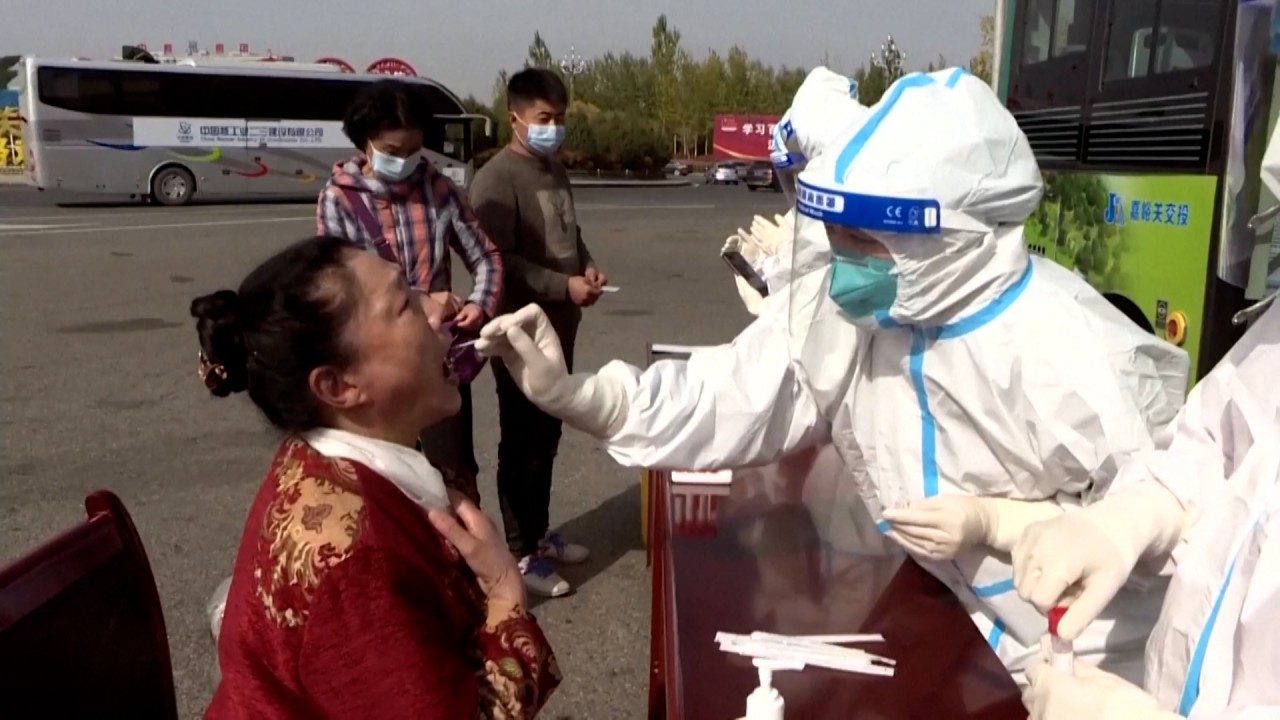
‘Imported case behind Covid-19 cluster’ in north China’s Heihe city
- Health officials say genome sequencing indicates Heihe cases not linked to those in Inner Mongolia and Gansu
- Tourism official in Inner Mongolia dismissed for failing to contain outbreak’s spread
Wu said the new Heihe cases were detected by screening , meaning the virus was already spreading in the community.
China is trying to stamp out a rash of cases in line with its zero tolerance policy but is under pressure as infections rise in other countries, according to NHC spokesman Mi Feng.
“There have been cases in 14 provinces in just 14 days,” Mi said.
Ge Yanhong, also from the NHC, said severe cases accounted for a higher share of the total than before, with 40 per cent of the confirmed cases over 60 years of age. She did not elaborate on the number of severe cases.
The NHC said 59 new community cases of Covid-19 were reported on Friday, the highest number since the outbreak began on October 17. Nineteen imported cases were also reported.

01:00
Chinese mainland reports 23 locally transmitted Covid-19 cases
In Heihe on the border with Russia, health officials said on Saturday that the health codes of all residents in the city would be changed to “yellow” until the outbreak ended, according to state broadcaster CCTV.
Under China’s colour-coded health status system, anybody classified as yellow is of medium exposure risk and must remain at home. A green code indicates the holder is not under quarantine and can move freely.
Saturday’s announcement applies to all residents with a Heihe identity number and could affect people living or working elsewhere.
The officials said they would grant green code exemptions to affected residents on a case-by-case basis.
But some internet users were critical of the citywide order.
“The coronavirus does not spread based on people’s ID numbers,” one commenter wrote on Weibo, China’s Twitter-like platform.
The State Council has sent a team to Heihe to contain the spread.

06:05
As more countries ditch ‘zero-Covid’ policy, why is China opting to ‘wait and see’?
In neighbouring Inner Mongolia, an official in charge of tourism was dismissed for failing to contain the spread of the coronavirus in the Alxa League, where 132 cases were reported as of Friday.
About 10,000 tourists have been stranded in Inner Mongolia by the outbreak for about two weeks.
Health officials said on Thursday that about 2,500 tourists were staying in hotels in the cities of Baotou and Ordos for two weeks of quarantine, and most would be transferred out of the region in the next three to five days.
At a conference in Beijing on Saturday, Chinese respiratory disease expert Zhong Nanshan said China could effectively contain the spread of the virus in less than one month, despite sporadic cases in some regions.
“China calls on other countries to pay close attention to the epidemic prevention and control work, and actively carry out vaccination work,” Zhong said. “Over 80 per cent of Chinese residents can be vaccinated by the end of this year.”

